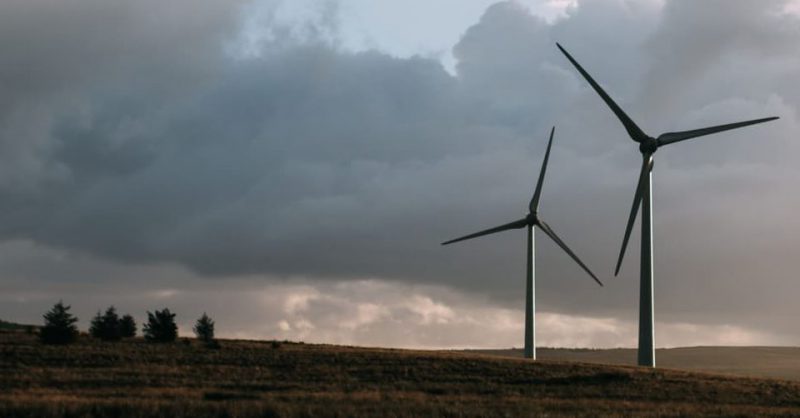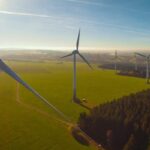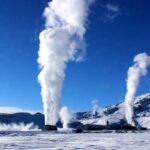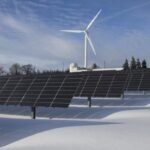We explain what wind energy is and how it is produced. What it is for, advantages, disadvantages and examples of this renewable energy.

What is wind energy?
Wind energy is that energy obtained by taking advantage of the force of the wind. Its name comes from the name of the god of the wind, Aeolusaccording to ancient Greek mythology.
The wind contains greater or lesser rates of kinetic energy, which Through a system of blades and turbines it can be converted into electrical energy in order to feed cities, industrial complexes or rural homes. Especially in geographical regions with constant and intense winds, this renewable natural resource offers a relatively important, safe and ecological performance.
Wind energy, like solar energy, It is part of the set of “green” energies or ecological ones that are more environmentally friendly, at least compared to other highly polluting ones such as the burning of fossil fuels. This is why the installation of wind farms throughout the world has become widespread in recent decades, in the face of the environmental alarm of climate change.
These wind farms are usually built on the sea coast, where their performance is higher (although their costs are higher), as well as on plains and large plains where the wind is constant and considerable. Around 5% of global electricity generation It is obtained from these sites, and countries like Denmark satisfy around 25% of their energy needs with them.
How is wind energy produced?
The uneven heating of the Earth's surface by sunlight generates changes in the pressure and temperature of the air masses that are naturally produced by winds. These air masses, when moving, can mobilize the blades of the wind generators, which are basically mills, only instead of transforming the kinetic energy of the wind into mechanical energy to grind wheat, they do so into electrical energy that is used for multiple uses. uses.
This occurs because as the propeller blades move, driven by the wind, they rotate the rotor of a generator, which together with an alternator, produce a constant electrical charge. These devices are called wind turbine generators and multiple similar facilities are usually needed, given that their production is relatively low.
What is wind energy used for?
Wind energy can be transformed into electricity, which is already enormously useful: illuminate, heat, power different devices, etc. Electricity is today an indispensable input for human civilization.
However, it is also wind energy that is transformed into mechanical energy to grind wheat and other grains in traditional mills, or even to pump water. Let us remember that wind is one of the oldest forms of energy used.
Advantages of wind energy

The advantages of this type of energy are:
- Cleaning It is a fairly ecological way of obtaining energy, since beyond the installation of wind farms, which can somewhat ruin the landscape, they do not produce any atmospheric or other pollutants.
- Security Wind farms do not present the short- and long-term risks of nuclear energy, nor do they pose health risks. There have been reported cases of annoyance due to the noise that these devices generate when rotating daily, and that is why their installation is preferred in fairly remote regions.
- It is renewable Wind is an inexhaustible and natural source of energy.
- Use of the land Wind farms can coexist with crops or other types of land use, or even in regions that are not arable in any other way, such as deserts or sea coasts or very steep slopes.
- Cost Wind technology is very economical compared to other forms of obtaining electricity.
Disadvantages of wind energy
The disadvantages of wind energy are:
- Unpredictability The wind does not blow constantly with the same intensity, therefore energy production is irregular and cannot be depended on only. It must be combined with some other method.
- Unprofitable Wind energy will be clean and safe, but it is not very efficient. Large areas of land are required to install numerous propellers and be able to produce considerable amounts of electricity.
- Environmental impact Although they do not pollute, wind farms disrupt the natural landscape and have an impact on local fauna, such as migratory birds.
Examples of wind energy
There are well-known wind farms such as the La Venta Wind Farm, located in Oaxaca, Mexico, which is made up of 104 wind turbines that contribute about 85 Megawatts of electricity to the electrical grid.
Another perfect example of harnessing the wind is the windmills of La Mancha, Spain, considered national heritage and immortalized in the novel by Miguel de Cervantes. Don Quijote of La Manchapublished in 1605.





